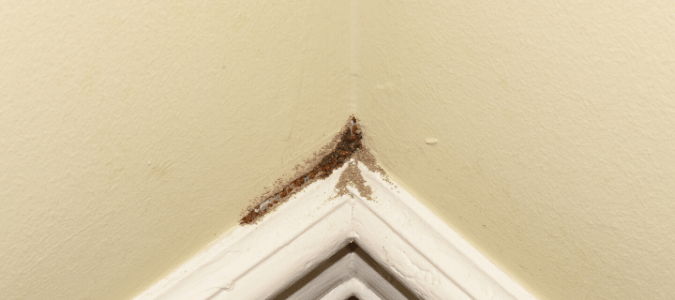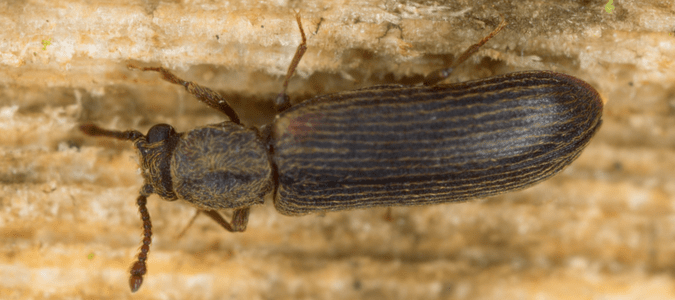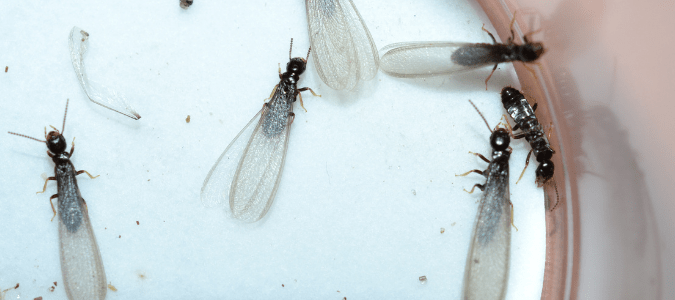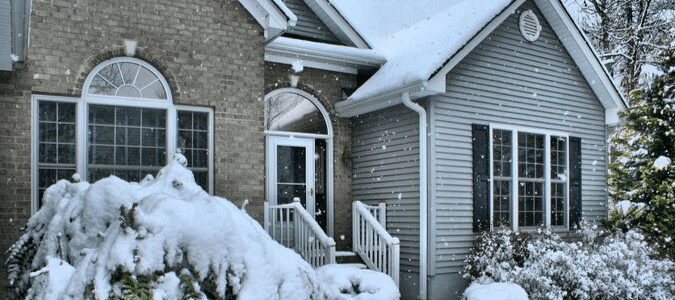Termite droppings are called frass. They look a lot like piles of sawdust or tiny wood pellets, but they are actually termite feces. They look like wood shavings because they contain a lot of wood. Termites feed on wood and consume the cellulose within it. Unfortunately, when you see termite droppings but no termites, it’s still a likely sign that these pests are wreaking havoc in a hidden spot nearby.
The reason why most homeowners fear termites is that these tiny pests can cause a lot of damage. As they eat through wood, they create tunnels and chambers that weaken the wood over time.
If you’ve ever seen wood that had termite damage, you’ve seen the way it simply crumbles away. When this kind of damage is done to a house, garage, deck or fence, it is dangerous and needs repairing.
Termite Frass: A Common Sign of Termite Activity
Termite frass is one of the common signs of drywood termite activity. These droppings show up when the termites are actively chewing away inside the wood. They might be inside wooden baseboards, flooring, furniture or decking. They could also be chewing through the wood framing that’s inside the walls and ceilings of most homes.
As drywood termites chew through the wood, they create tiny holes that serve as openings to the outside. They kick their droppings out through these holes to make more room within. This is why you might never see the termites themselves, but you may see their piles of droppings. The droppings will be a similar color to the wood that the termites are consuming.
The most common places where people see termite frass are on windowsills, on the floor next to baseboards or underneath wooden furniture or decking. If you look carefully above the pile of frass, you might be able to spot the tiny hole the termites used to kick the frass out. It will be no more than a millimeter or two in diameter and might look like a hole poked with a sharp pencil.
Subterranean termites don’t leave visible droppings behind because they use their frass to create mud tubes. These mud tubes are another common sign of termite activity. Usually about the width of a pencil, these tubes are commonly found outside on your home’s foundation or support beams. Subterranean termites build these tubes between their underground colonies and the wood they are feeding on for nourishment. They use them to travel back and forth between the termite mud nest and their primary feeding site.
Termite Swarms
Another common sign of termite activity is termite swarms in late spring. Both drywood and subterranean termites swarm when it gets warmer outside, and especially after a heavy rain.
You might see the swarmers themselves—the winged reproductives that exit the colony to find a mate and establish a new colony. Swarmers look like winged ants that fly or crawl around in a frenzied way. They typically fly towards sources of light. This is why they are often spotted near a light source like a window, exterior door or light fixture. After they find a mate, they shed their wings. Shed wings are another sign of termite activity.
Spotting a termite swarm might be the only time you ever see actual termites, even if you have an active infestation. This is because the majority of the colony’s members live out their entire lives discreetly hidden from view, either inside the nest, traveling along their mud tubes or within the wood they feed on to survive.
This is why hiring a reputable pest control professional is the best way to determine whether you have a termite problem. An experienced professional can make a thorough inspection of your home and property to look for any signs of termites. If there are signs of an active infestation, they can develop a customized plan to treat the nest.
Termites cause billions of dollars’ worth of damage to American homes every year. The best way to protect your most valuable investment is by hiring a termite specialist to inspect your property and treat if there are any signs of these destructive pests.
Powder Post Beetles Versus Termites
If you see tiny holes in wood with what looks like sawdust coming from the holes, you might have termites. It’s also possible that you have powder post beetles. These pests don’t look much like termites, but they cause similar damage. The signs of powder post beetles versus termites are also similar, and it can be tough to tell the difference between them. This is why it’s wise to hire a pest control professional. They can properly identify what you’re dealing with, and then provide the appropriate pest treatment option.
Powder Post Beetles—Signs and Identification
As you can see in the image above, adult powder post beetles are dark brown in color, a quarter-inch or less in length, and narrow and cylindrical in shape. There are narrow lines down the length of their long bodies, which are rounded at the end. Most of the damage these beetles cause to wood is not caused by the adults, however. It is actually powder post beetle larvae that create the most damage.
Powder post beetle larvae are about the same size as the adults, but they are whitish-cream in color with curved bodies. When the adult beetles lay eggs on wood, or just inside an exit hole in the wood, the eggs hatch into larvae within a few weeks. The larvae then start to eat and tunnel through the wood.
They can stay in this larval stage for months or even years before finally transforming into adults. The adults then bore exit holes out of the wood to find a mate, lay eggs and start the life cycle all over again.
Powder post beetles most often infest hardwoods like oak. In most homes, the beetle pests were introduced unknowingly within lumber brought in for flooring. They can also be brought in inside wood furniture. Often, the main signs of a powder post beetle infestation are the tiny holes they bore in wood and the sawdust powder that comes out from the holes.
Termites—Signs and Identification
Like powder post beetles, termites eat wood, damaging its structure as they create tunnels and chambers within it. Tiny holes in wooden furniture, flooring or baseboards can be a sign of drywood termites. Termite frass is another sign of termite activity.
These signs can be mistaken for powder post beetle activity, and vice versa. Since termite droppings are coarser in texture than the powdered sawdust that powder post beetles create, that’s one way to tell which type of pest you’re dealing with. Termites also look very different from powder post beetles. Adult termite swarmers, pictured above, are about a quarter-inch long and brownish or black in color. They look a lot like winged ants.
Of course, people rarely see termites except during swarming season. It’s also pretty rare to see powder post beetles. Both species live out most of their lives within the wood they consume to survive.
Neither pest is a direct danger to humans or pets, but both can cause extensive damage to people’s property. That makes them a real threat, because they can cause structural damage that is dangerous and also expensive to fix.
The best way to determine whether you have powder post beetles or termites is to contact a professional for accurate identification. A licensed and reputable pest control professional can determine what type of pest infestation you’re dealing with, whether or not it is active, and how best to treat it.
Are Termites Active in Winter?
Colder weather affects many types of pests. Fleas, mosquitoes and roaches are all far less active in winter, and even die off when it gets too cold outside. Based on that knowledge, many people wonder, are termites active in winter?
Unfortunately, cold weather doesn’t always slow down termite activity. These pests purposely build their nests in protected spaces, such as underground or within wall voids. Subterranean termites use mud tubes to travel between their underground colonies and their feeding sites, so they never have to be exposed to the elements. All species of termites spend lots of time inside the wood they eat, which also gives them protection from the cold.
If a subterranean termite colony is too close to the surface of the ground, it will indeed be affected by extremely cold temperatures. It will also be affected by other extremes, like a drought or a heat wave. This is exactly why these pests seek out shaded spots to build their nests. They are also able to tunnel down well below the surface so weather changes won’t affect them much.
Termites may slow down a bit during winter in their aboveground activity, like feeding. This break won’t last long, though. They resurge again in spring, when outside temperatures warm up again.
Termites often swarm after the first big rain of the season. This is because they need moisture to survive, and heavy rains raise humidity levels. This is an ideal condition for adult reproductive termites to venture out of the colony to find mates.
If they aren’t treated by an experienced termite specialist, these swarmers will go on to lay eggs and found new colonies. Established termite colonies can be enormous, numbering in the hundreds of thousands or even millions. This is why it’s so important to reach out to a professional for help if you think you may have a pest problem.
ABC Can Eliminate the Termites on Your Property
If you have noticed signs of termite activity, it’s imperative to contact a professional. ABC Home & Commercial Services uses scientifically proven methods of termite control. We can put your mind at ease.




